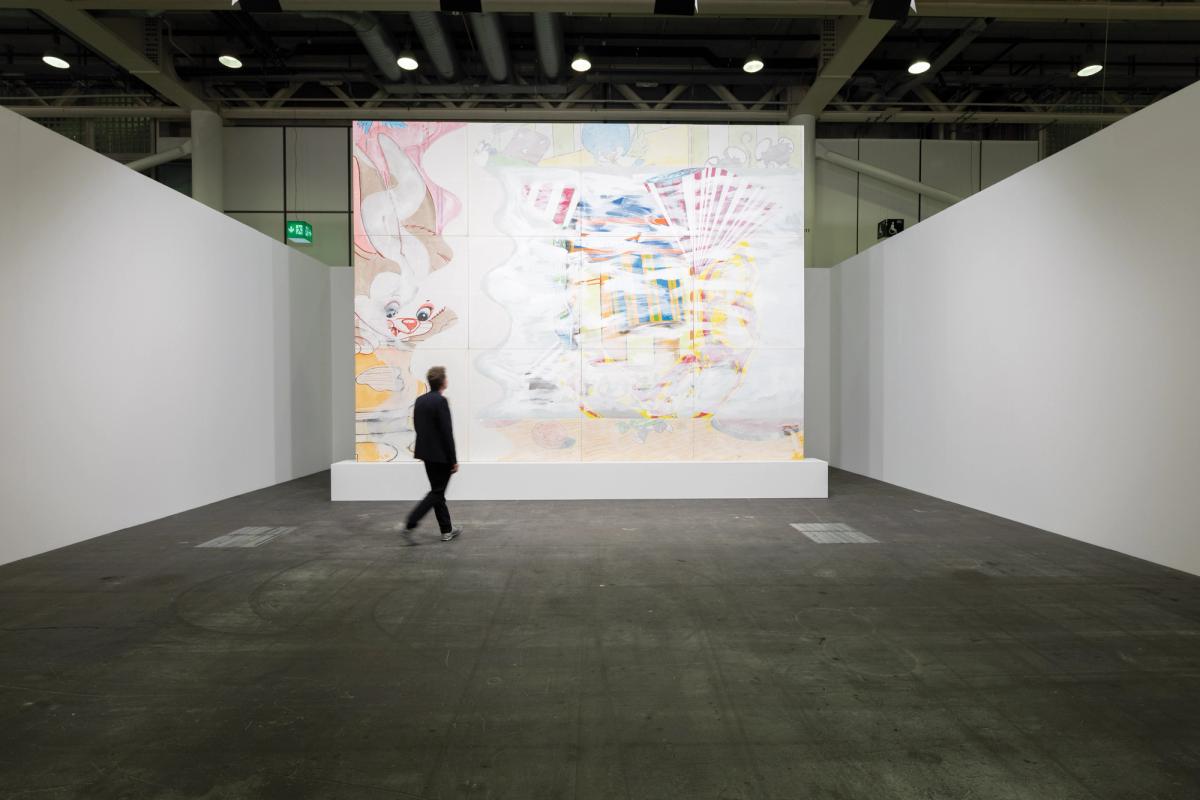“It’s a platform to show stuff that is not usually possible to show in an art fair for technical or space reasons,” says Giovanni Carmine, curator of the Unlimited section of Art Basel. Taking up the entirety of the cavernous Hall 1.0, this is the place for room-filling installations, wall-sized paintings and monumental sculptures. “Artists don’t only work for domestic spaces,” Carmine says. “It’s an inherent need for artists to work on a large scale.”
That’s not to say Unlimited is all about gigantism. The more spacious format also allows some smaller, more low-key works to shine away from the bustle of the main fair. “Art Basel offers the best conditions for the artworks to be seen, understood and enjoyed by the public,” Carmine says.
We asked the curator to give us a tour of the Unlimited sector and pick out some of his highlights.
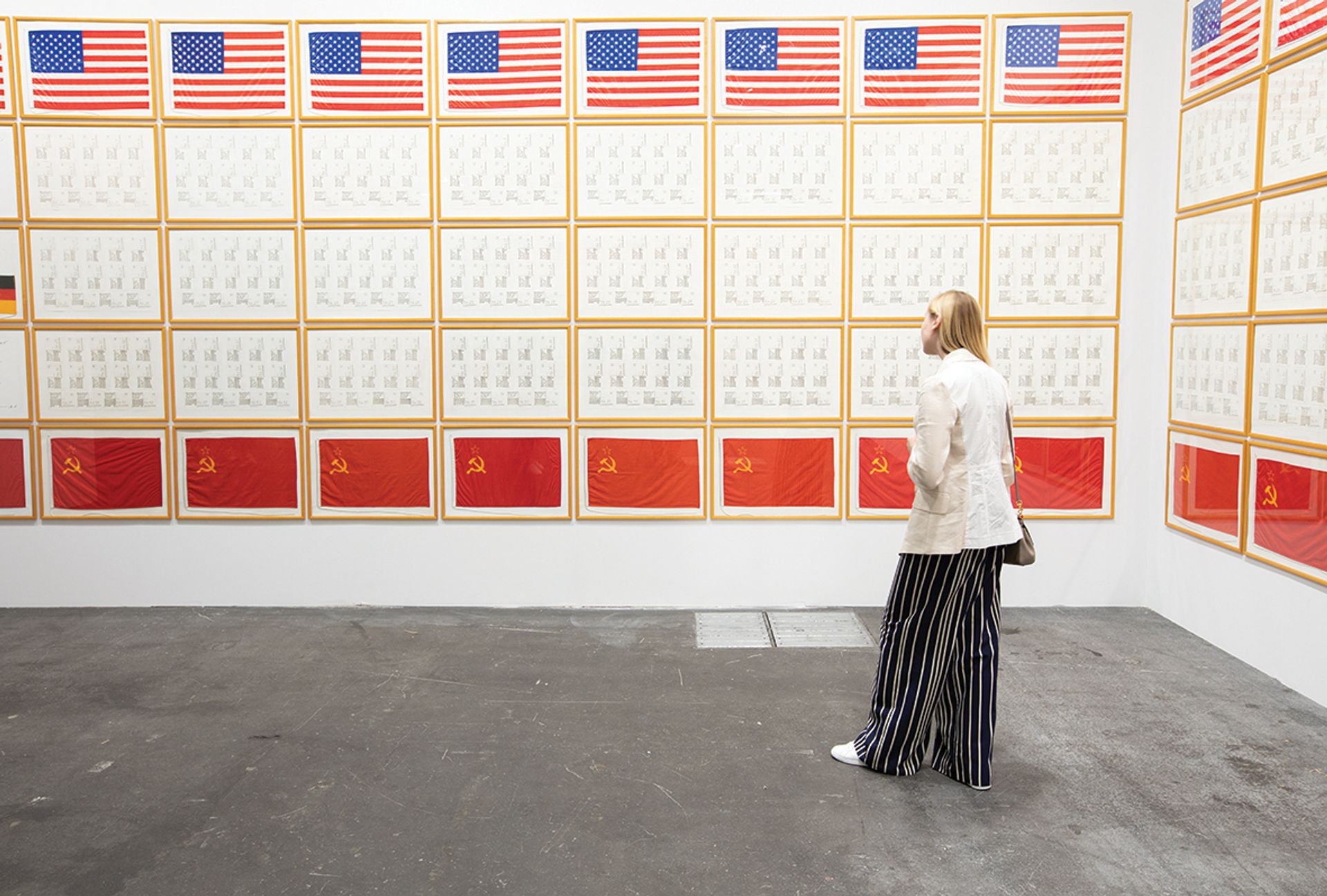
Hanne Darboven's Ost-West-Demokratie (1983) Photo: David Owens
Hanne Darboven's Ost-West-Demokratie (1983)
Darboven was born in 1949, the same year that Germany was separated, and she made this work in 1983. She tried to represent her life in the middle of this tension between the West and Communism, because she came from Eastern Germany and moved to Western Germany. It is a conceptual visualisation of her biography—there are 44 columns for the 44 years. This piece is amazing because maybe one year ago the relationship between Russia and the West was different, but now the tension is there again.
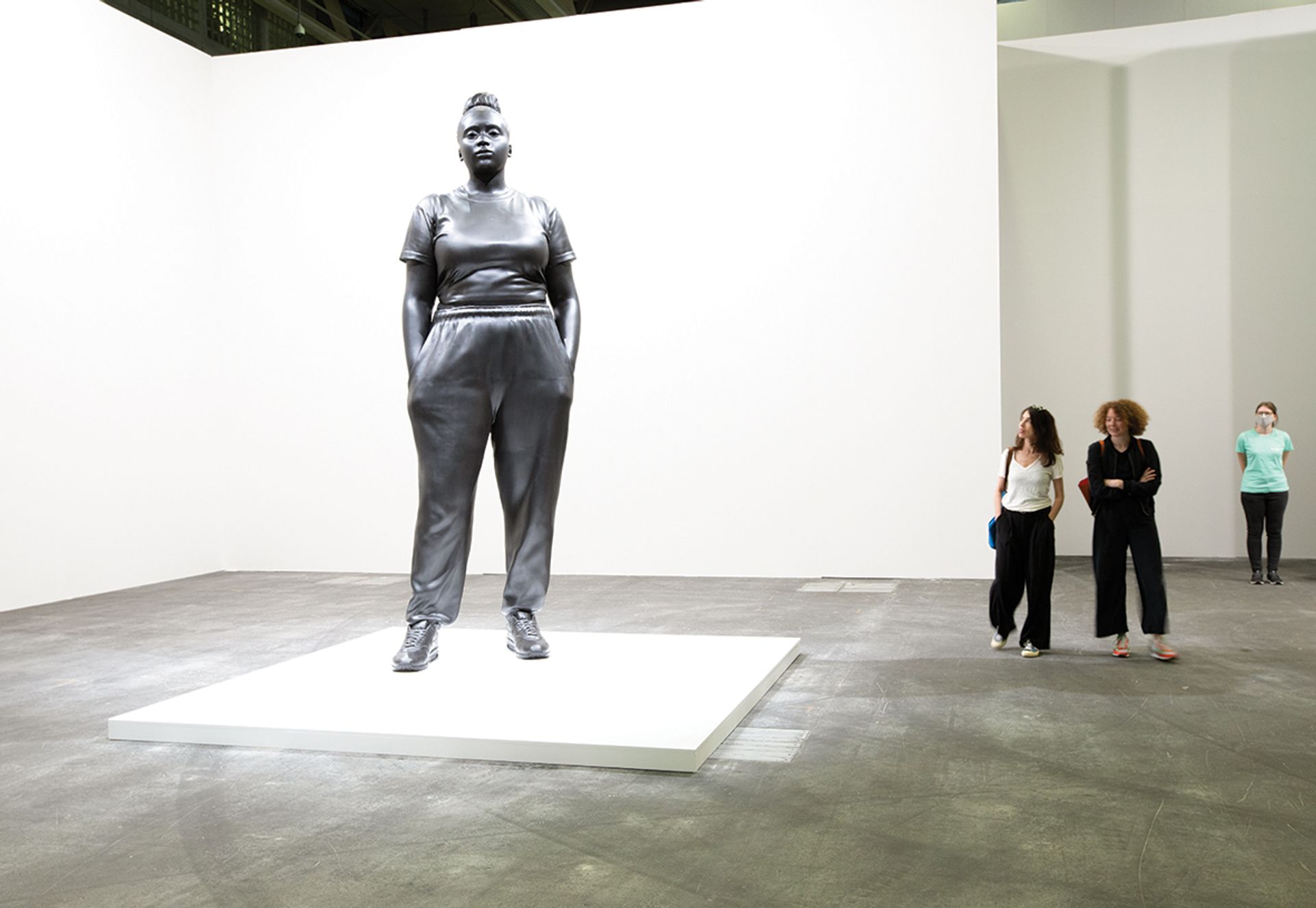
Thomas J Price's Moments Contained (2022) Photo: David Owens
Thomas J Price's Moments Contained (2022)
This is a very beautiful piece about representation, about what a monument is and who needs to be represented in monuments. It’s not a real person, it’s a person Price has generated in CGI, created digitally then realised physically. It’s a normal woman rather than the kind of person you might usually see a sculpture of: white, male, a king perhaps. It also plays with scale and space. It’s larger than life-size but it’s not on a plinth, which makes a difference—does anyone have the right to be on a plinth?

Andrea Zittel's A-Z Personal Uniforms, 2nd Decade: Fall/Winter 2003-Spring/Summer 2013 (2003-2013) Photo: David Owens
Andrea Zittel's A-Z Personal Uniforms, 2nd Decade: Fall/Winter 2003-Spring/Summer 2013 (2003-2013)
We wanted to welcome the public with this work that has a utopian quality. The show has some very dark works so it is good to start with something positive. What we are showing here is an archive of ten years of Andrea Zittel’s own clothes that she has designed and woven herself. So they are like a sculpture for the body but also clothes that she was using.

Leonardo Drew's Number 341 (2022) Photo: David Owens
Leonardo Drew's Number 341 (2022)
This is probably the biggest sculpture we have at Unlimited this year. The work has a lot to do with painting, and a new definition of painting. Every iteration of his work has a new number but sometimes material is re-utilised in a different way. Every single fragment is a painting itself, it’s not found material. There is an element of chaos and order, which is why it’s probably an interesting piece for our time. You can walk into it—
I think it’s important to get inside. Up close it is kind of aggressive, from further away it is more of a composition.
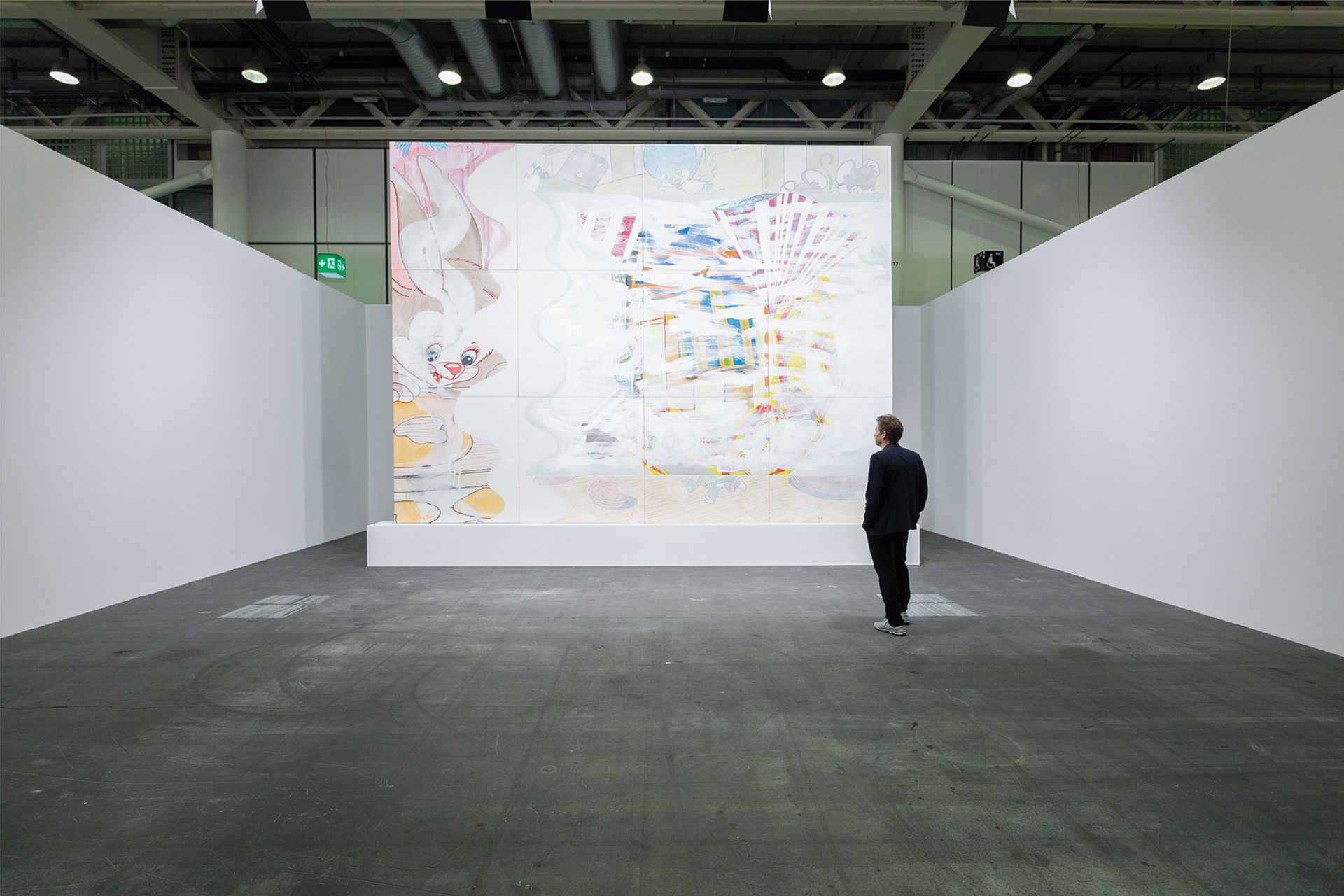
Michel Majerus's Weißes Bild (1994) Photo: David Owens
Michel Majerus's Weißes Bild (1994)
This artist died pretty young—he was in a plane crash when he was 35. He didn’t have a long career as a result, but I think he revolutionised painting at the beginning of the 1990s. It was the time just before the internet, but it’s just on the edge. It’s a very analogue painting but you can feel this moment of rupture from the analogue tradition. My generation were really touched by this artist and I think he will become more and more art historically important. This work was shown in his major exhibition at the Kunsthalle Basel in 1996 so it’s great that the work comes back to Basel now. It hasn’t lost any of its power and energy.
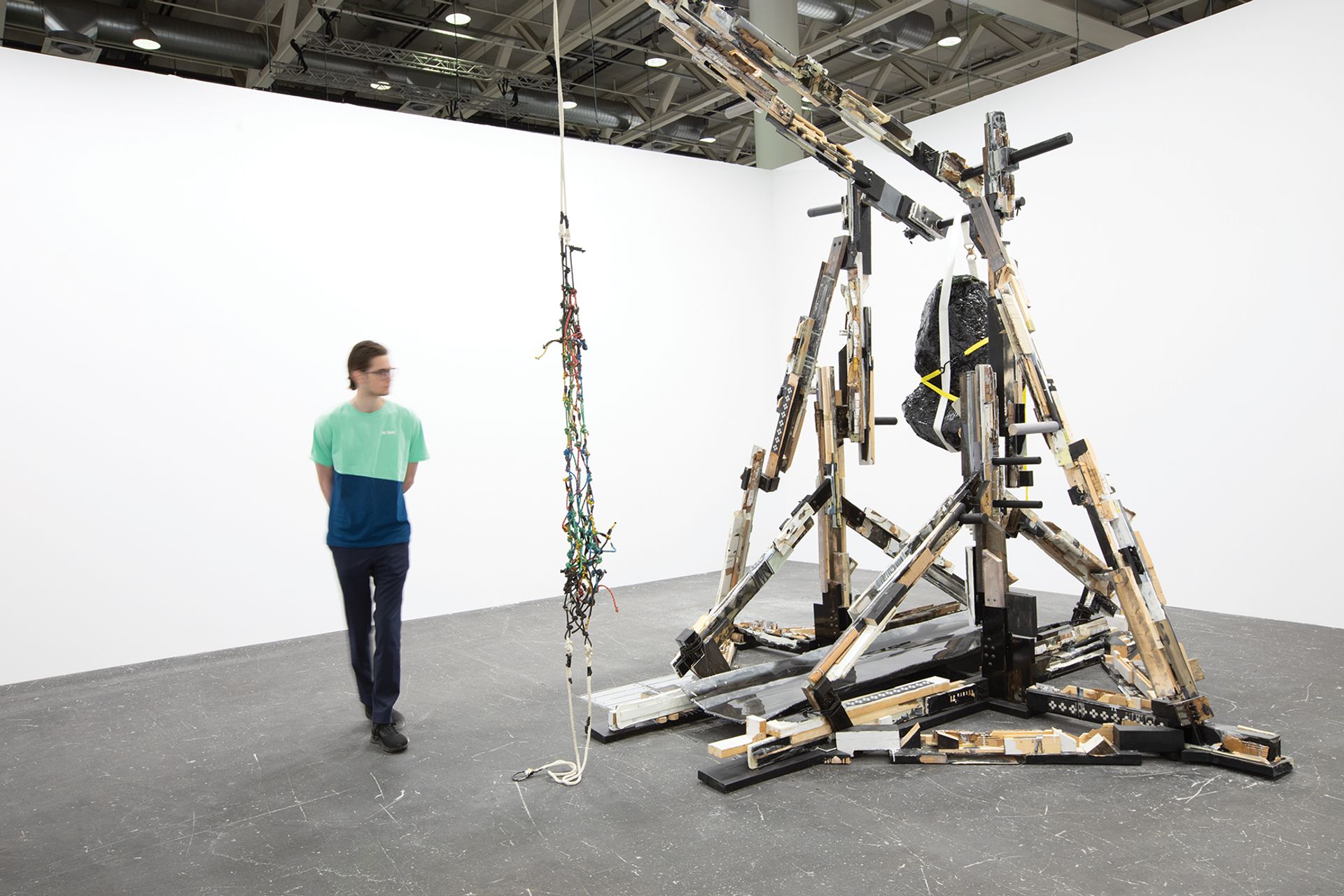
Andra Ursuta's Vandal Lust (2011/2022) Photo: David Owens
Andra Ursuta's Vandal Lust (2011/2022)
Ursuta is a Romanian artist and this is kind of a homage to an installation by Ilya Kabakov, who made a portrait of himself trying to escape his small Soviet apartment. On the one hand there’s a lot of humour, but on the other she grew up under Communism so this desire to escape was there fore sure—and all of us want to escape something.


